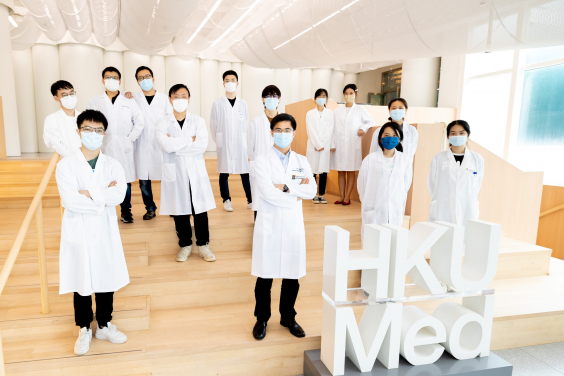Researchers at LKS Faculty of Medicine, The University of Hong Kong (HKUMed) and collaborators from the School of Basic Medical Sciences, Fudan University, Shanghai, have developed an 'intravenous injection plus light-triggered intraocular drug release' strategy to achieve drug accumulation in retinoblastoma. The strategy avoids invasive intravitreal drug administration and shows promise in treating retinoblastoma and other eye diseases. The research has just been published in Advanced Science [link to publication], and a Patent Cooperation Treaty (PCT) patent application has been filed based on this work.
Background
Retinoblastoma is a severe eye cancer of infancy and childhood and can cause blindness or even death. Currently, the invasive intravitreal drug administration used in clinics is unpleasant for patients and can lead to side effects such as ocular haemorrhage, endophthalmitis and retinal detachment, etc. Thus, effective drug administration routes in a less invasive manner are desirable for the treatment of retinoblastoma.
Research methods and findings
The research team found that light-triggered intraocular drug release after intravenous injection of photo-responsive nanomedicine can efficiently result in intraocular drug accumulation and suppress retinoblastoma growth. The strategy is mainly based on the fact that the released hydrophobic drugs can efficiently cross retinal blood vessels to overcome the inner blood‐retinal barriers that nanocarriers encounter in drug delivery.
To demonstrate the strategy, the research team designed a photocleavable three-legged molecule. The molecules can self-assemble with anticancer drug doxorubicin into nanoparticles, which can dissociate to release drugs upon green-light irradiation. The excellent therapeutic efficacy and biosafety of the nanoparticles were demonstrated in orthotopic retinoblastoma-bearing mice.
Significance of the study
The study achieves drug accumulation in retinoblastoma following systemic administration of light-triggered drug release systems, providing a new strategy to treat retinoblastoma in a safer and more efficient manner. The strategy will also advance the development of photo-responsive drug delivery systems for the treatment of other eye diseases.
About the research team
This study was led by Dr Wang Weiping, Assistant Professor of Dr Li Dak-Sum Research Centre and Department of Pharmacology and Pharmacy, HKUMed, and Principal Investigator of the State Key Laboratory of Pharmaceutical Biotechnology, HKU. Professor Zhan Changyou from the School of Basic Medical Sciences, Fudan University, Shanghai, was the co-corresponding author. Mr Long Kaiqi, PhD candidate of Department of Pharmacology and Pharmacy, HKUMed, and Mr Yang Yang, PhD student of the School of Basic Medical Sciences, Fudan University were the co-first authors. Other researchers included Dr Lv Wen, Postdoctoral Fellow, Dr Li Dak-Sum Research Centre, HKU; Dr Jiang Kuan, Postdoctoral Fellow, School of Basic Medical Sciences, Fudan University; Dr Li Yafei, PhD graduate, Department of Pharmacology and Pharmacy, HKUMed; Dr Amy Lo Cheuk-yin, Associate Professor, Department of Ophthalmology, HKUMed; and Professor Lam Wai-ching, Albert Bing-Ching Young Professor in Ophthalmology, Clinical Professor, Department of Ophthalmology, HKUMed.
Acknowledgements
This work was supported by Health and Medical Research Fund (No. 06173456) of Food and Health Bureau, Government of the Hong Kong Special Administrative Region, National Natural Science Foundation of China (No. 81803469 and No. 81673361), Hong Kong Research Grants Council - Early Career Scheme (No. 27115220), and Ming Wai Lau Centre for Reparative Medicine Associate Member Program.







